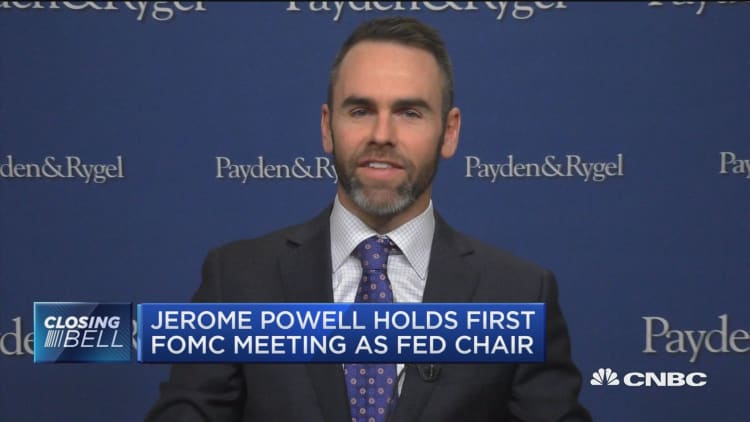The dollar fell after the Federal Reserve's first interest rate hike in 2018, after initially paring losses from early morning trading.
The dollar index, which tracks the greenback versus a basket of six currencies, lost 0.65 percent, to 89.78. The dollar index last fell below 89.90 on Tuesday, when it hit 89.846
The Fed on Wednesday announced it would raise interest rates 0.25 percent, the first hike in 2018. It also upgraded its outlook for the U.S. economy, citing job gains and low unemployment. While the central bank expects gradual rate increases long-term, its outlook remains unchanged at three hikes in 2018.
"The economic outlook has strengthened in recent months. The Committee expects that, with further gradual adjustments in the stance of monetary policy, economic activity will expand at a moderate pace in the medium term and labor market conditions will remain strong," the Federal Reserve committee said in a statement.
The decision came after a two day meeting of the Federal Reserve -- the first overseen by Federal Reserve Chair Jerome Powell who took over from Janet Yellen in February.
Powell came to the position amid a critical time for the Fed, which is normalizing policy after years of accommodation triggered by the financial crisis.
Some analysts doubted whether a faster pace of Fed rate increases could stem the greenback's decline that began last year on improving economic growth outside the United States and the possibility that other major central banks would scale back their monetary stimulus.
"We are not persuaded that there will be enough of a shift in the FOMCs overall consensus for four hikes in total this year to be fully incorporated into the view," ScotiaBank strategists Shaun Osborne and Eric Theoret wrote in a research note, adding they saw a risk of the dollar "trading somewhat lower once the post-FOMC dust has settled, considering that market expectations may be stretched."

The dollar was last down 0.35 percent, at 106.16 .
The euro was last up 0.46 percent, at $1.2296.
The and Mexican peso gained after reports that the White House had dropped a demand related to auto exports in the renegotiation of the North American Free Trade Agreement (NAFTA).
The peso rose 1.47 percent, at 18.491.
The rose 0.95 percent, at $0.7795, rebounding from a three-month low of $0.7672.
Australia, a big producer of commodities, is among the most vulnerable countries if U.S. President Donald Trump's protectionist policy spurs a reprisal from commodity consumer China.
Sterling rose 0.95 percent, at $1.413 after data showed U.K. wages grew at their fastest pace for more than two years, supporting bets that the Bank of England would raise interest rates as early as May.
--Thomson Reuters contributed to this report.


